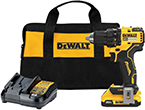Locating the Water Shutoff Valve in Your Home
Written by Lee Wyatt (last updated May 27, 2020)
Just imagine if you will the following scenario. You wake up one morning to the faint sound of running water, but you don't know exactly where it is coming from. But it can't be all that bad right, after all it's only a faint sound nothing to major. At least that is what you think until you walk into your kid's room, which is right under to the laundry room. When you look in, it looks like there is a large bubble of water forming in the ceiling, and along one of the walls. What do you do? Do you know where the water shutoff valve is? Locating the water shutoff valve in this situation can be a bit of a nightmare if you don't know exactly where it is.
Luckily, the water shutoff valve is not that difficult to find. Considering that most homeowners are on public water, the directions here will be based off of that. All you need to do is follow these simple directions, and you should have no problem whatsoever finding the shutoff valve. Just keep in mind that it is better to find that valve prior to an emergency forming.
- Locate the water meter. The first step in locating the water shutoff valve is to find the water meter. On most houses this is where the shutoff valve will be located. For most people, the water meter will be located outside, usually along the back wall, but often times in a little box that is near the front curb.
- Identify the knobs. When you have found the water meter take a look and see if you can find the pipe that leads into it, and the one that leads out of it. Both of these pipes will have a knob attached to them. One of the pipes is the water supply that comes into the house from the city, to be read by the meter. The other pipe is the one that heads towards the house.
- Turn the correct knob. Locate the knob that is attached to the pipe that is leading towards the house from the street. This will be the one that is on the pipe that is between the meter box and the street. Turn the knob until the water stops flowing. This will stop the water from flowing towards your house, and stop the bill from getting higher at the same time.
- Test, and do your work. Now that you have the water shut off, go ahead and test to make sure that you really do have the water turned off. You do this simply by going into the home, and turning the water on. If you did everything right, the water will run for a moment or two, and then stop. Once the water does stop go ahead and do the work that you needed to have done.
- Restart the water. After you have completed the work that was needed, go back out to where the valve was located and turn the water back on. Make sure that you turn the same knob that you used to turn the water off, other wise you are simply turning the water off again, and you can easily get confused.
Author Bio
Lee Wyatt
Contributor of numerous Tips.Net articles, Lee Wyatt is quickly becoming a regular "Jack of all trades." He is currently an independent contractor specializing in writing and editing. Contact him today for all of your writing and editing needs! Click here to contact. Learn more about Lee...
Getting a Home Improvement Loan
One of the most mind racking parts of any home improvement project is how are you going to pay for it. Before making any ...
Discover More
Cinnamon Rolls
Cinnamon rolls are a perennial favorite for breakfast. Since it can be a tad expensive to constantly buy premade rolls ...
Discover More
Art Storage
One of the drawbacks to being an artist is that you need a lot of space. Anyone that is an artist can tell you that they ...
Discover More
More Home Improvement Tips
Finding a Good Plumber
As anyone who has ever had any plumbing work done can tell you a good plumber is worth their weight in gold. Here are ...
Discover More
What is Water-Hammering?
If you have ever spend any time around the plumbing section of your local home improvement store, or even talked to a ...
Discover More
What is a Drain-and-Trap Auger?
If you go to any home improvement store, or talk to any plumber, you will quickly see that the drain-and-trap auger is ...
Discover More

Comments